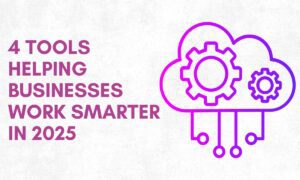In the rapidly evolving landscape of financial services, staying competitive demands a cutting-edge approach. Enter Exadata, a revolutionary solution designed specifically for financial services companies. This article delves into the transformative impact of Exadata in financial technology, shedding light on what it is, how it functions, and why it’s indispensable for the sector. Get ready to embark on an exciting journey into the world of Exadata!
Unlocking the Power of Exadata in Financial Technology
Understanding Exadata: A Game-Changer for Financial Services
Exadata, Oracle’s high-performance database platform, is engineered to supercharge the data management capabilities of financial institutions. By integrating software, servers, storage, and networking into a unified system, Exadata delivers remarkable advantages for managing financial data efficiently.
The Benefits of Exadata for Financial Services
Speed and Efficiency: The Cornerstone of Exadata
In the dynamic world of financial services, speed and efficiency are paramount. Exadata excels in this domain, offering remarkable speed and performance. By combining potent database servers with intelligent storage, it minimizes query times, facilitating swift decision-making.
Security and Compliance: Non-Negotiable Factors
Data security is a top priority in the financial sector. Exadata meets this challenge head-on, offering advanced security features such as data encryption and auditing. It not only ensures data integrity but also aids compliance with industry regulations.
Scalability and Flexibility: Adapting to Change
Financial institutions grow over time, and their infrastructure must keep pace. Exadata provides the necessary scalability to accommodate expanding data volumes and complex workloads. This scalability ensures that institutions can grow without sacrificing performance.
Cost-Efficiency: Maximizing Returns
Exadata combines exceptional capabilities with cost-efficiency. It streamlines infrastructure complexity, reducing the need for intricate configurations and maintenance. Additionally, its consolidation capabilities optimize resource utilization, enhancing the return on investment.
Exadata in Action: Real-Life Implementations
Enhancing Risk Management
A global bank leveraged Exadata to bolster its risk management capabilities. The powerful analytics and high-performance computing of Exadata enabled real-time data analysis, leading to more informed decisions and improved risk mitigation.
Optimizing Trading Platforms
An investment firm harnessed Exadata’s speed and scalability to enhance its trading platform. The rapid processing and scalability enabled smooth handling of high transaction volumes, ensuring uninterrupted trading activities during peak periods.
Empowering Data Warehousing
A prominent insurance company turned to Exadata for data warehousing. With improved query performance and faster data loading, they could deliver insights on customer behavior, claims analysis, and fraud detection more swiftly.
Meeting Regulatory Compliance
A multinational financial institution utilized Exadata for regulatory compliance reporting. The platform’s database capabilities allowed them to consolidate diverse data sources into a single system, meeting stringent compliance requirements within tight deadlines.
These real-life examples exemplify how financial services companies have harnessed Exadata to transform their operations, achieving remarkable improvements in performance, scalability, reliability, and cost savings across various functions.
Cost Savings and Efficiency Gains with Exadata in Financial Technology
In the fast-paced world of financial services, organizations are continually seeking ways to streamline operations, cut costs, and enhance efficiency. Exadata plays a pivotal role in this pursuit, revolutionizing data management in financial institutions.
Implementing Exadata leads to significant cost savings. By consolidating multiple databases onto a single platform, organizations reduce hardware and software licensing expenses. Moreover, Exadata’s advanced compression techniques enhance storage efficiency, reducing the need for additional storage devices and minimizing associated costs.
But the benefits extend beyond cost savings. Exadata delivers outstanding performance, enhancing operational efficiency. Its unique architecture combines high-performance servers and flash storage technology, resulting in rapid data retrieval and processing. This translates to faster transaction processing, quicker report generation, and more rapid decision-making.
Exadata’s robust security features provide peace of mind in handling sensitive customer data. It offers advanced encryption methods to safeguard data at rest and during transmission, ensuring compliance with strict regulatory requirements.
Scalability is another advantage offered by Exadata. As businesses expand or experience fluctuating IT demands due to market conditions or seasonal trends, they can scale their computing power up or down without investing in new hardware resources from scratch.
Furthermore, centralizing data management through Exadata’s integrated database machine approach streamlines operations and reduces human error risks associated with managing disparate systems separately.
Best Practices for Implementing and Managing Exadata in Financial Technology
Implementing and managing Exadata in financial services requires careful planning and execution to maximize its benefits. Here are some best practices:
1. Define Clear Objectives: Before implementing Exadata, define your goals and expectations, aligning them with specific challenges or opportunities you aim to address.
2. Collaborate with Experts: Seek assistance from experienced professionals who understand the intricacies of deploying and managing Exadata in financial services environments.
3. Optimize Workload Placement: Identify workloads that benefit most from Exadata’s high-performance infrastructure and allocate resources accordingly.
4. Regular Monitoring and Tuning: Continuously monitor system performance using Oracle’s tools, like Enterprise Manager or Automatic Workload Repository, to identify bottlenecks or areas for improvement.
5. Thorough Testing: Prioritize comprehensive testing before migrating critical applications or data to Exadata systems to ensure compatibility and identify potential issues.
6. Implement Proper Security Measures: Safeguard sensitive financial data with robust security controls, including encryption, access controls, and regular patching.
7. Stay Updated with Patches and Upgrades: Keep systems up to date with the latest patches, bug fixes, and firmware upgrades to maintain peak performance and security while avoiding known vulnerabilities.
By adhering to these best practices, financial services organizations can harness the full potential of Exadata, unlocking its benefits of speed, efficiency, scalability, security, and cost savings.
Challenges and Limitations of Exadata in Financial Services
While Exadata offers numerous benefits, it’s essential to acknowledge the challenges and limitations:
1. Initial Costs: Implementing Exadata can be a substantial upfront investment, including hardware and software components. Additionally, training and expertise are required to manage Exadata effectively.
2. Data Migration Complexity: Transferring existing data to Exadata can be complex, especially when dealing with large volumes of sensitive data. Careful planning is necessary to ensure a smooth migration process.
3. Analytical Workloads: While Exadata excels in transactional workloads, it may not always offer optimal performance for analytical workloads or complex queries. Organizations need to assess their specific use cases.
4. Vendor Lock-In: Proprietary technology like Exadata can lead to vendor lock-in, making it challenging and costly to switch to other solutions.
Despite these challenges and limitations, the unparalleled performance and data-handling capabilities of Exadata continue to draw financial services companies. However, a thorough assessment of requirements against considerations is crucial before implementing Exadata.
Conclusion: Why Exadata is the Future for Financial Services Companies
Exadata’s transformative impact on financial services is undeniable. It offers exceptional performance, scalability, and cost savings, aligning perfectly with the high-speed demands of the financial industry. As technology advances rapidly, organizations must embrace innovative solutions like Exadata to remain competitive.
In today’s financial services world, where rapid data processing, secure data handling, and operational efficiency are non-negotiable, Exadata is the answer. Embracing Exadata unleashes endless possibilities, from streamlined operations to cost savings and real-time decision-making. Its undeniable power continues to shape the future of financial services.
Read More on Bid Data
Which Is Better to Study, Data Science or Big Data?
Embarking on a Data-Driven Journey: Arda Sengun Champions Open Source Big Data Initiatives
Big Data and Predictive Analytics: Revolutionizing Student Financial Support Programs

































